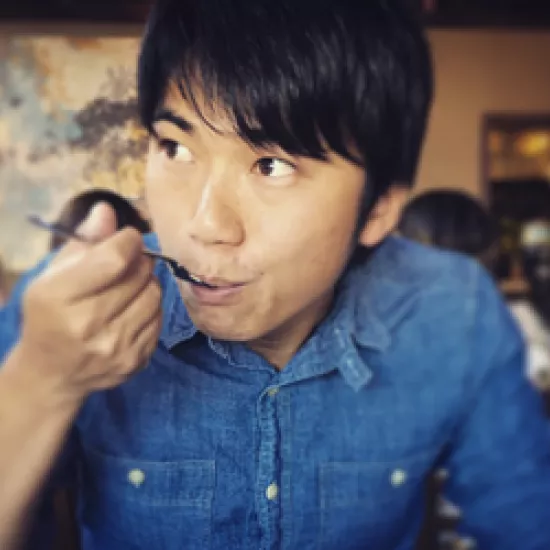
Keisuke Fukuda
-
E-mail:
-
Phone:
-
Website:
-
Room:CC 4067
Research Interest
Our mind is a highly efficient information processor. It is capable of selecting goal- related information from a plethora of irrelevant information, representing and manipulating the selected information, and storing and retrieving the information for use later in time.
My research aims to achieve two goals that interact: 1) Read the mind, or deepen the understanding of the cognitive and the neural mechanisms of our information-processing abilities, and 2) Lead the mind, or improve our information-processing abilities by utilizing the knowledge of its cognitive and neural mechanisms. To achieve my research goals, I primarily use two neuroscience techniques that complement one another, crossed with an array of experimental manipulations to understand certain cognitive mechanisms. Electrophysiological recordings of the electroencephalogram (EEG), single- and multi- unit activity, and local-field potentials allow us to continuously examine the temporal dynamics of the neural networks underlying cognitive processes with millisecond-level resolution. These help to dissect the rapid cascade of cognitive and neural operations that results in the behavioral output of an individual. Much of my work uses an individual-differences approach. This provides a large-scale picture of the complex relationships amongst cognitive abilities by revealing the structure of covariance in individuals’ performance on a multitude of cognitive tasks. In the following section, I discuss my ongoing research program that utilizes electrophysiology and the individual-differences approach to achieve my research goals.
1) To read the mind,
a. Uncovering the basis of individual differences in visual working memory (VWM) capacity.
Visual working memory allows us to actively represent a limited amount of visual information in mind. It is well known that individuals vary in its capacity; some individuals can maintain 4 or more objects while others can maintain fewer than 2 objects. In this line of work, I examine why and how individuals differ in this ability by 1) revealing its relationship with other cognitive construct such as fluid intelligence, attentional control, and long-term memory and 2) uncovering the neural and cognitive operations that lead to successful utilization of the limited capacity of VWM.
b. Understanding the consequences of visual working memory capacity in our information processing abilities.
The aforementioned research program focuses on understanding the causes of VWM capacity for a given individual, in contrast, this line of research aims to understand the impact of having such a restrictive bottleneck in information processing. For example, I examine the role of VWM capacity in our ability to encode new visual information into visual long-term memory (VLTM) by utilizing individual differences as a scientific tool. In addition, by utilizing EEG correlates of VWM, I examine the role of VWM capacity in retrieving previously learnt visual information. These lines of work play a critical role in constraining and refining models of memory.
c. Examining the neural basis of visual working memory.
Visual working memory plays a pivotal role in our information processing ability. Yet, the neural origin of its capacity limit is not clearly known. In recent work, I examined the nature of neural correlates of VWM capacity using EEG recordings. This work showed that oscillatory activity in particular frequency bands appears to underlie the storage of information in VWM. Knowing the exact nature of the neural correlates of VWM capacity allows us to construct biologically plausible models of how multiple objects are maintained in mind. To further refine the models based on biological constraints, my post-doctoral research examines the inter-relations among single-unit activity, local-field potentials, and surface EEG activity (Fukuda, Schall, & Woodman, in prep) that enables VWM maintenance using non-human primates.
2) To lead the mind,
a. Developing user-friendly methods for displaying information based on our cognitive limitations.
As I noted earlier, one of my research goals is to help improve our information- processing abilities based on the accumulating knowledge about how our mind works. One approach is to use our acquired knowledge to design effective schemes of information display so that the cognitive expected value is maximized. For example, our work suggests that visual information is better learnt (= encoded in long-term memory) when it is exposed multiple times with short study times than when it is exposed one time with long study time. This finding suggests that we can enhance learning by having individuals encode study materials multiple times for short periods of time, rather than having them study them once for a long time. Thus, developing the schemes of information display based on how our mind processes information promises more efficient interactions with the real world, and can be a direct demonstration of how basic science serves to the good of society.
b. Utilizing real-time electrophysiological recordings to enhance human cognition.
Another approach that I take to help enhance human cognition is to utilize neural activities recorded in real time. Scalp EEG provides ideal access to the brain as people interact with their environment on a daily basis because it is 1) relatively easy to use, 2) economically affordable compared to other means of neural recordings (e.g., MEG, NIRS, and fMRI), and 3) it provides continuous data with millisecond level temporal resolution. Indeed, many of the recent advances in brain-computer interfaces (BCIs) have been made with EEG recordings. My work aims to utilize the scalp EEG measures as people perform a variety of tasks in the real world to 1) craft user-specific learning schemes to enhance learning, and 2) provide real-time feedback of cognitive functions to improve cognitive processing in real time.
